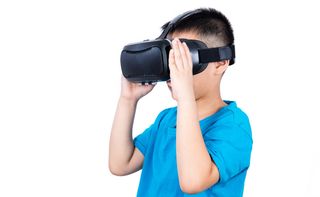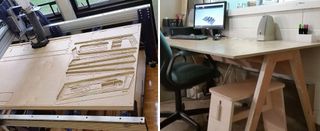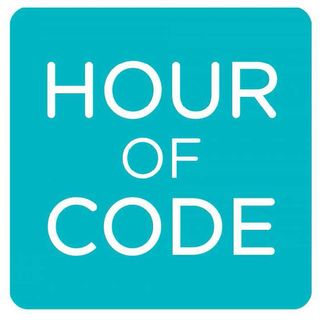FEATURE: Rethinking Instruction and Learning and Digital Tools

Just before the Thanksgiving break, a group of Tech & Learning leaders met online to share their perspectives on technology trends, how they impact instruction, and some of their best tech tools.
Jerri Kemble, assistant superintendent in Lawrence (KS) Public Schools, discussed her district’s moonshot initiative—in which they stepped back to rethink and redesign the way they deliver education. Instead of using instructional hours as the guidepost, they asked themselves what the district would look like if they were to ask each student what problems they’d like to solve as an adult instead of what they wanted to be.
Efforts to rethink how Lawrence fosters creative learning environments have led to:
- More emphasis on “soft” skills such as SEL initiatives, character education, and restorative justice. For example, they now bring in preschoolers to be read to by kindergartners to help preschoolers prepare for kindergarten.
- They’re redesigning learning spaces to foster more cooperative learning. The district is raising money through a bond issue to redesign the look and feel of schools.
- Using more technology for blended learning and to teach smarter.
- Letting students, teachers, and schools move forward at their own speed.
- Re-educating the community, parents, and business partners as to why this reshaping is important to students’ futures.
- Providing each student across the state with their own individual plan of study.
Lawrence began with a group of pilot schools and plans to add new schools each year. However, this is not a cookie-cutter approach. Every school in the state is tasked with re-inventing itself. Each community must determine how to do this on their own to respond to their unique communities and challenges. Kemble says that learning about systems thinking as a district has been enlightening. They’re rethinking everything. When they introduced project-based learning (PBL) at the school with the highest number of ELL students, they discovered that while these students don’t speak English well, they are successful using project-based learning strategies.
Technology that Individualizes Learning
Marianthe Williams, director of technology at River Dell (NJ) Regional School District, reported that her district made the decision some years ago to be a Microsoft-only district. They adopted the Office 365 path several years ago. She talked about the newest functionality they have with class notebooks. OneNote Class Notebook has a personal workspace for every student. These are private for each student and can only be seen by the student and teacher. Through another of the OneNote learning tools suite, they can personalize instruction for struggling readers with an immersive reader. Writing is also easier for students, as the new tools allow students to voice to text. Math equations in Windows 10 are easier, as students can use their stylus with the notebooks. Solving math homework is now less of a struggle for students. The Microsoft streaming tool has also been helpful, as videos are automatically shared through OneNote or Microsoft Stream. This tool also keeps file sizes down. Teachers embed the assessment in the file with the video. The new partnership between Flipgrid and Microsoft (announced at ISTE 2018) provides students with a social learning platform that allows them to establish their voice through video. They can work collaboratively, which creates a less stressful environment. Students can go on a virtual gallery walk, for example, and leave video responses. Williams also talked about how much their teachers love creating videos on Flipgrid. They’re now using the tool for PD days as well as with students.
Virtual and Augmented Reality

Sean Wybrant, career and technical education high school teacher in Colorado Springs (CO) District 11, was named Colorado Teacher of the Year in 2017, in part because of his collaborative and innovative way of teaching. He teaches both computer science and video game development. His classes are moving toward a studio environment, which is more conducive to his subject matter and style of teaching. His primary recommendation is not to wait until a teacher with a computer science background gets to your school or district, but to find a teacher who is willing to be a learner and just go for it. Jump in.
Wybrant reminded everyone that this is new technology, so traditional training doesn’t mean much. It’s very interdisciplinary work. You need programming, leadership, art, and design. He advises education leaders to think about this as they support a teacher in this role. These teachers will need specific professional development and support that other teachers may not need. When asked what a good first step might be, Wybrant responded by saying that it depends on the purpose and cost of the program. Some VR headsets, for example, allow users to grab some content or click through. Others allow students to make interactive content themselves. He has kids making VR museums, for example. They use Unity as a game design engine because it supports 3D app development. “Find the developer site for whatever hardware you’re buying, and be careful with your purchases,” Wybrant cautioned. “Here on the edge of technology, you get what you pay for.”
Tech & Learning Newsletter
Tools and ideas to transform education. Sign up below.
5 Trends that Impact Teaching
Cheltenham (PA) School District is also experimenting with virtual reality, says Brandon Lutz, supervisor of instructional technology. “We’re using Occulus for discovery education; we’re not programming it yet,” he says. “Our fourth graders just went to the space station and we are hoping to eventually create some content ourselves.” Virtual reality is one of the trends Lutz sees that can lead to more immersive learning experiences for students. The “maker mindset” is another such trend. Lutz believes being a maker is as much about design thinking and student creation as it is about physical space. He suggests Google’s Tour Builder as a resource for students and teachers to integrate into the curriculum. The death of Flash, which is going away by 2020, is a trend he’s paying attention to because so many teachers are still using it, although they need to move to HTML5.
Now that college and career readiness is so important, Cheltenham has mandated the creation of student portfolios beginning in third grade. The district wants to help students learn how to tell their story—to have them reflect on their own learning. Students can create portfolios and then have the story of each school year they can take with them when they graduate or leave the district. They’re using Cirkled In as their portfolio platform. And finally, Lutz says, it’s critical to help kids practice good digital citizenship. He suggests Google’s Be Internet Awesome as well as Common Sense Media and NetSmartz as go-to references for solid recommendations and practices in this area.
Ed Ruiz, board of education member in Asbury Park (NJ), said that his district is also focused on student-created portfolios. They’re using Seesaw because students can take pictures, make videos, and record their voices. Parents can also link to the portfolios to keep up with their student’s development.
3D Printers and CAD Tools

“I looked long and hard to figure out the best way to use a 3D printer meaningfully, instead of just printing widgets,” said Frank Pileiro, supervisor of technology at Linwood (NJ) Board of Education. He wanted students to be able to take everyday objects and produce energy with them. Students have been using 3D-printed objects with electromagnets to produce energy. Also, they’ve used CAD to change some downloaded designs as well as their own designs and then used the ShopBot CNC Mill with 3D carving ability to produce desks and art displays for the school. You can see some of their work in the pictures.
Computer Coding

Diane Doersch, chief technology and information officer in Green Bay (WI) Public Schools, shared that they are participated in the December Hour of Code this year. Although they’ve wanted to participate for some time, the organization had not previously signed the district’s student privacy agreement. According to the Code.org website, there have been Hour of Code events in more than 180 countries with more than 177,000 registered events just this year alone. Green Bay plans to code with students during school hours and with parents in the evening.
RESOURCES
With some of the newer technologies like VR, AR, game development, and 3D printing, it’s clear that if you wait for publisher-developed content, you may be waiting for a long time. Our panel felt strongly that helping kids to reflect on and demonstrate their learning with new tech tools is really a matter of jumping in and experimenting.
Here’s a list of resources to get you started:
Virtual Reality
Insta360 ONE Camera (product)
Oculus Go (product)
AR/VR and Game Development
Unity: https://unity3d.com
Unity tutorials: https://unity3d.com/learn/tutorials
Oculus developer forum: https://developer.oculus.com
HTC VIVE developer forum: https://community.viveport.com/t5/Developer-Forums/ct-p/developers
HoloLens developer forum: https://forums.hololens.com
Windows mixed reality documentation: https://docs.microsoft.com/en-us/windows/mixed-reality/
Lynda tutorials for Autodesk and Unity: https://www.lynda.com
Makerspaces / Maker Mindset
Digital Citizenship
Be Internet Awesome: Amazing Internet safety program for kids
Common Sense Media: Internet safety resources for teachers, parents, and students
NetSmartz: Internet safety resources for teachers, parents, and students
The Death of Flash—2020
PhET: Simulations for science and math using HTML5
Digital Portfolios
Google Sites: Easily make student portfolios within your Google domain
Cirkled In: Student-created portfolios they can take with them to college
Seesaw: Student-teacher collaboration platform and portfolio builder
Microsoft TEALS: Pairs professionals with computer science teachers—read more about it here: https://www.tealsk12.org
Thanks to our advisors for sharing trends and tools with us during our November online chat. Stay tuned for the time and topic of our December online chat. Please join us for our next online conversation.
Annie Galvin Teich has more than 25 years' experience in education writing and publishing. She is an edtech industry expert in content marketing and copywriting. As a regular contributor to Tech & Learning she focuses on the information needs of district decision makers.



